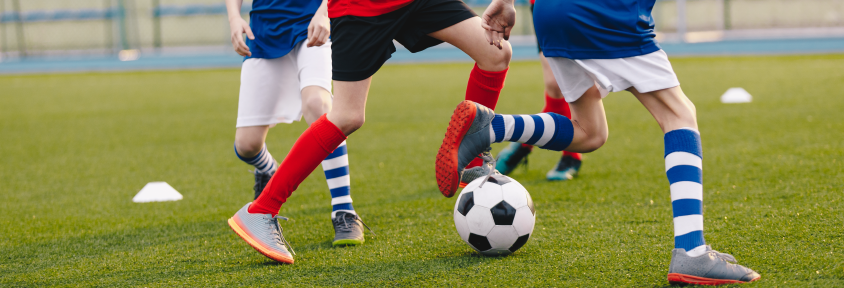Football
Football is the sport that causes the most injuries, with an estimated 455,449 annually. Despite all the padding and support players have, football has been the cause of a plethora of injuries, one of the most common being knee injuries.
Most common football knee injury: ACL rupture
Of all the knee injuries experienced due to football, the most common is a rupture of the ACL (anterior cruciate ligament). The most common symptoms are swelling, loss of range of motion, tenderness in the joint line, and discomfort while walking. The injury can subside on its own based on the severity of the tear, but if symptoms become severe or persist after 24 hours of rest, we recommend going to see a sports medicine physician.
What is the ACL?
The ACL is the place where three bones—the tibia, femur, and patella, also known as the shinbone, thighbone, and kneecap—meet to form your knee. An ACL rupture is when a tear occurs in the muscle and often creates pain and swelling.
Soccer
This internationally beloved sport is well-known for its injuries, but most commonly, the concussions caused by the high-speed balls flying towards players’ heads.
Most common injury: concussions/TBI (traumatic brain injury)
Soccer is estimated to cause around 412,607 injuries (in both male and female players) a year, and a projected 22% of these injuries are concussions. Traumatic brain injuries (TBIs), more commonly known as concussions, are usually caused by trauma to the head (often by a heavy item or a hard fall). This injury is identifiable through persistent headaches, nausea/vomiting, blurry vision, and dizziness. Upon recognizing these symptoms, the patient should be taken to an emergency room as soon as possible.
Basketball
Basketball is one of the most popular sports worldwide and another one of the most dangerous sports, causing around 169,904 injuries a year. Because of the need for rapid hand movement, jammed fingers are one of the most commonly seen injuries in this sport.
Most common basketball injury: jammed fingers/sprains
Jammed fingers occur when the tip of the finger is compressed towards the hand, resulting in a sprain. The symptoms of this injury are very similar to those of other sprains: swelling, bruising, pain with pressure, and limited range of motion. Because the hands are a sensitive part of the body, we recommend that you see a sports medicine specialist as quickly as possible after the injury occurs.
Sprains are very commonly confused with breaks, as the sensation and symptoms are similar. However, there are some critical differences between breaks and sprains, explained by our very own Edward Brooke Roberts, MD, a Baylor St. Luke’s Medical Group sports medicine physician in Pasadena.



.png)


